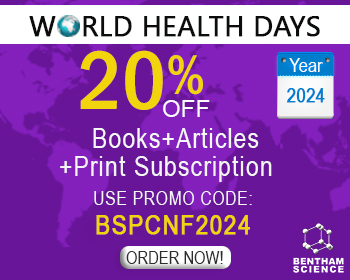Abstract
In this report, we extend the SAR analysis of a number of lipophilic guanylhydrazone analogues with respect to in vitro growth inhibition of Trypanosoma brucei and Trypanosoma cruzi. Sleeping sickness and Chagas disease, caused by the tropical parasites T. brucei and T. cruzi, constitute a significant socioeconomic burden in low-income countries of sub-Saharan Africa and Latin America, respectively. Drug development is underfunded. Moreover, current treatments are outdated and difficult to administer, while drug resistance is an emerging concern. The synthesis of adamantane-based compounds that have potential as antitrypanosomal agents is extensively reviewed. The critical role of the adamantane ring was further investigated by synthesizing and testing a number of novel lipophilic guanylhydrazones. The introduction of hydrophobic bulky substituents onto the adamantane ring generated the most active analogues, illustrating the synergistic effect of the lipophilic character of the C1 side chain and guanylhydrazone moiety on trypanocidal activity. The n-decyl C1-substituted compound G8 proved to be the most potent adamantane derivative against T. brucei with activity in the nanomolar range (EC50=90 nM). Molecular simulations were also performed to better understand the structure-activity relationships between the studied guanylhydrazone analogues and their potential enzyme target.
Keywords: Adamantane, S-adenosylmethionine decarboxylase (AdoMetDC), guanylhydrazones, structure-activity relationships, trypanocidal agents, kernel-based partial least squares regression, szmap, hydration analysis, docking-scoring calculations.
[http://dx.doi.org/10.1128/CMR.00045-14] [PMID: 25278579]
[http://dx.doi.org/10.1136/bmjgh-2018-001334] [PMID: 30899568]
[http://dx.doi.org/10.1016/j.csbj.2017.02.003] [PMID: 28352456]
[http://dx.doi.org/10.3390/tropicalmed2030036] [PMID: 30270893]
[http://dx.doi.org/10.3389/fmicb.2018.02655] [PMID: 30555425]
[http://dx.doi.org/10.1371/journal.pntd.0000412] [PMID: 19707588]
[http://dx.doi.org/10.1007/s00415-019-09425-7] [PMID: 31209574]
[http://dx.doi.org/10.1016/j.idc.2018.10.003] [PMID: 30712768]
[http://dx.doi.org/10.1016/S0140-6736(17)31510-6] [PMID: 28673422]
[http://dx.doi.org/10.1111/j.1469-0691.2011.03536.x] [PMID: 21722252]
[http://dx.doi.org/10.1093/molbev/msl135] [PMID: 17012373]
[http://dx.doi.org/10.1128/AEM.71.12.8941-8943.2005] [PMID: 16332895]
[http://dx.doi.org/10.1186/1756-3305-1-3] [PMID: 18275594]
[http://dx.doi.org/10.1016/j.pt.2015.11.008] [PMID: 26826783]
[http://dx.doi.org/10.3389/fimmu.2019.00039] [PMID: 30740102]
[http://dx.doi.org/10.1371/journal.pntd.0006890] [PMID: 30521525]
[PMID: 25125985]
[http://dx.doi.org/10.1371/journal.pntd.0000783] [PMID: 21200416]
[http://dx.doi.org/10.1371/journal.pntd.0005642] [PMID: 28750004]
[http://dx.doi.org/10.1371/journal.pntd.0004350] [PMID: 26735855]
[http://dx.doi.org/10.1016/S0140-6736(03)15345-7] [PMID: 14738812]
[http://dx.doi.org/10.1016/j.ijid.2011.03.018] [PMID: 21683638]
[http://dx.doi.org/10.1016/S1474-4422(12)70296-X] [PMID: 23260189]
[http://dx.doi.org/10.1128/CMR.18.1.133-146.2005] [PMID: 15653823]
[http://dx.doi.org/10.1172/JCI200421052] [PMID: 14966556]
[http://dx.doi.org/10.1186/s13104-015-1244-3] [PMID: 26140922]
[http://dx.doi.org/10.1111/brv.12301] [PMID: 27739621]
[http://dx.doi.org/10.1093/trstmh/trx034] [PMID: 28957467]
[http://dx.doi.org/10.1155/2015/583262] [PMID: 26504815]
[http://dx.doi.org/10.1016/S2214-109X(14)70203-7] [PMID: 25103304]
[http://dx.doi.org/10.3389/fmicb.2016.02126] [PMID: 28082973]
[http://dx.doi.org/10.1186/s13223-016-0113-5] [PMID: 26807135]
[http://dx.doi.org/10.1038/sj.bjp.0707354] [PMID: 17618313]
[http://dx.doi.org/10.1007/978-3-319-13884-8_18]
[http://dx.doi.org/10.1179/2047773213Y.0000000105] [PMID: 23916333]
[http://dx.doi.org/10.1371/journal.pntd.0006980] [PMID: 30475806]
[http://dx.doi.org/10.1093/nar/gkf394] [PMID: 12087182]
[http://dx.doi.org/10.2174/156802611795429167] [PMID: 21401507]
[http://dx.doi.org/10.1016/S0006-2952(00)00477-9] [PMID: 11137702]
[http://dx.doi.org/10.2147/RRTM.S34399] [PMID: 30100776]
[http://dx.doi.org/10.1586/14787210.2014.959496] [PMID: 25204360]
[http://dx.doi.org/10.1186/s13071-018-2634-x] [PMID: 29471865]
[http://dx.doi.org/10.1007/s40265-019-1051-6] [PMID: 30635838]
[http://dx.doi.org/10.1016/S0140-6736(18)30019-9] [PMID: 29353603]
[http://dx.doi.org/10.1016/j.pt.2018.08.006] [PMID: 30181071]
[http://dx.doi.org/10.1021/cr500365f] [PMID: 25365529]
[http://dx.doi.org/10.1371/journal.pntd.0006450] [PMID: 29758036]
[http://dx.doi.org/10.1038/s41598-018-29564-7] [PMID: 30050153]
[http://dx.doi.org/10.1016/S1473-3099(15)00243-1] [PMID: 26231478]
[http://dx.doi.org/10.1016/B978-0-12-385863-4.00008-3] [PMID: 21820556]
[http://dx.doi.org/10.1016/S0140-6736(10)60061-X] [PMID: 20399979]
[http://dx.doi.org/10.1002/em.21839] [PMID: 24347026]
[http://dx.doi.org/10.1016/j.actatropica.2015.12.017] [PMID: 26747009]
[http://dx.doi.org/10.1038/nrmicro.2017.69] [PMID: 28579611]
[http://dx.doi.org/10.1016/S1473-3099(13)70191-9] [PMID: 23969207]
[http://dx.doi.org/10.1016/j.pt.2011.11.001] [PMID: 22192816]
[http://dx.doi.org/10.1074/jbc.TM118.003342] [PMID: 30333232]
[http://dx.doi.org/10.1016/S1471-4922(01)01908-0] [PMID: 11323309]
[http://dx.doi.org/10.1016/S1471-4922(00)01829-8] [PMID: 11137740]
[http://dx.doi.org/10.1007/s00726-007-0537-9] [PMID: 17610127]
[http://dx.doi.org/10.1042/BJ20110362] [PMID: 21834794]
[http://dx.doi.org/10.1074/jbc.M109.081588] [PMID: 20220141]
[http://dx.doi.org/10.1016/0006-2952(92)90122-Y] [PMID: 1530659]
[http://dx.doi.org/10.1016/j.bmcl.2009.04.096] [PMID: 19419862]
[http://dx.doi.org/10.1128/AAC.01674-08] [PMID: 19289530]
[http://dx.doi.org/10.1128/AAC.00076-09] [PMID: 19451291]
[http://dx.doi.org/10.1021/acsinfecdis.7b00022] [PMID: 28350440]
[http://dx.doi.org/10.1021/acs.jmedchem.7b01654] [PMID: 29271204]
[http://dx.doi.org/10.1016/j.bmc.2017.07.063] [PMID: 28807574]
[http://dx.doi.org/10.1074/jbc.M112.442475] [PMID: 23288847]
[http://dx.doi.org/10.2174/092986710792065027] [PMID: 20858176]
[http://dx.doi.org/10.1021/cr100264t] [PMID: 23432396]
[http://dx.doi.org/10.1016/j.nurt.2008.10.037] [PMID: 19110208]
[http://dx.doi.org/10.1039/C4CS00477A] [PMID: 26171466]
[http://dx.doi.org/10.3390/molecules22020297] [PMID: 28212339]
[http://dx.doi.org/10.1002/med.20013] [PMID: 15389731]
[http://dx.doi.org/10.1016/j.ejmech.2011.01.047] [PMID: 21354674]
[http://dx.doi.org/10.1002/psc.2719] [PMID: 25448731]
[http://dx.doi.org/10.1021/jm051026+] [PMID: 16722632]
[http://dx.doi.org/10.1021/jm800412d] [PMID: 18610998]
[http://dx.doi.org/10.1016/j.bmc.2016.01.058] [PMID: 26867487]
[http://dx.doi.org/10.2298/JSC170213033A]
[http://dx.doi.org/10.1016/S0223-5234(00)00166-5] [PMID: 11006486]
[http://dx.doi.org/10.1016/j.bmcl.2010.01.031] [PMID: 20138519]
[http://dx.doi.org/10.3390/molecules21060671] [PMID: 27338323]
[http://dx.doi.org/10.1021/jm061077m] [PMID: 17181173]
[http://dx.doi.org/10.1517/17460441.2013.758630] [PMID: 23317445]
[http://dx.doi.org/10.3390/ijms20163944] [PMID: 31416113]
[http://dx.doi.org/10.1039/C7RA04180B]
[http://dx.doi.org/10.1016/S0960-894X(99)00632-0] [PMID: 10636229]
[http://dx.doi.org/10.2174/157488912800673128] [PMID: 22574674]
[http://dx.doi.org/10.1021/acs.cgd.9b00026]
[http://dx.doi.org/10.4049/jimmunol.1502135] [PMID: 27194788]
[http://dx.doi.org/10.5562/cca3540]
[http://dx.doi.org/10.4155/fmc-2018-0599] [PMID: 31161793]
[http://dx.doi.org/10.1016/j.bmcl.2007.04.108] [PMID: 17588747]
[http://dx.doi.org/10.1039/b804907f] [PMID: 18698478]
[http://dx.doi.org/10.1016/j.bmc.2009.01.009] [PMID: 19195900]
[http://dx.doi.org/10.1016/j.ejmech.2010.08.009] [PMID: 20805012]
[http://dx.doi.org/10.1021/jm200217m] [PMID: 21542562]
[http://dx.doi.org/10.1111/cbdd.13088] [PMID: 28834291]
[http://dx.doi.org/10.1021/jm00367a007] [PMID: 6690682]
[http://dx.doi.org/10.1042/bj2370685] [PMID: 3800910]
[http://dx.doi.org/10.1021/jm00163a049] [PMID: 2296025]
[http://dx.doi.org/10.1016/0960-894X(95)00541-5]
[http://dx.doi.org/10.1128/AAC.40.6.1448] [PMID: 8726018]
[http://dx.doi.org/10.1128/AAC.40.6.1442] [PMID: 8726017]
[http://dx.doi.org/10.1016/j.ejmech.2004.07.001] [PMID: 15501541]
[http://dx.doi.org/10.1016/j.exppara.2015.01.004] [PMID: 25595343]
[http://dx.doi.org/10.1021/jm7014292] [PMID: 18281929]
[http://dx.doi.org/10.1002/cmdc.200900019] [PMID: 19422003]
[http://dx.doi.org/10.1016/j.bioorg.2012.01.004] [PMID: 22336689]
[http://dx.doi.org/10.2307/3282883] [PMID: 2614608]
[http://dx.doi.org/10.1111/mmi.12285] [PMID: 23750752]
[http://dx.doi.org/10.1002/j.1460-2075.1990.tb07462.x] [PMID: 2167831]
[http://dx.doi.org/10.1124/pr.112.007336] [PMID: 24381236]
[http://dx.doi.org/10.1016/j.cbi.2006.12.006] [PMID: 17229415]
[http://dx.doi.org/10.2174/1381612822666151125000550] [PMID: 26601966]
[http://dx.doi.org/10.2174/156802610790232251] [PMID: 19929824]
[http://dx.doi.org/10.2174/1568026614666140929124445] [PMID: 25262799]
[http://dx.doi.org/10.1007/s12272-015-0640-5] [PMID: 26208641]
[PMID: 21695633]
[http://dx.doi.org/10.1248/yakushi.130.315] [PMID: 20190516]
[http://dx.doi.org/10.1039/C6RA15820J]
[http://dx.doi.org/10.1007/978-1-62703-059-5_1] [PMID: 23086835]
[http://dx.doi.org/10.2174/09298673113209990001] [PMID: 23651302]
[http://dx.doi.org/10.1021/ci700052x] [PMID: 17591764]
[http://dx.doi.org/10.1002/prot.340130304] [PMID: 1603810]
[http://dx.doi.org/10.1021/acs.jmedchem.5b02008] [PMID: 26913380]
[http://dx.doi.org/10.1038/nrd1549] [PMID: 15520816]
[http://dx.doi.org/10.1007/s12539-019-00327-w] [PMID: 30877639]
[http://dx.doi.org/10.1007/978-1-4939-8630-9_15] [PMID: 30039412]
[http://dx.doi.org/10.1021/jm0306430] [PMID: 15027865]
[http://dx.doi.org/10.1021/jm051256o] [PMID: 17034125]
[http://dx.doi.org/10.1021/ja01062a035]
[http://dx.doi.org/10.1021/jm4004285] [PMID: 24351051]
[http://dx.doi.org/10.1016/j.drudis.2007.08.004] [PMID: 18061879]
[http://dx.doi.org/10.1007/978-3-319-27282-5_37]
[http://dx.doi.org/10.1016/B978-0-12-809633-8.20197-0]
[http://dx.doi.org/10.1021/ci100062n]
[http://dx.doi.org/10.1039/J39710003906]
[http://dx.doi.org/10.1002/recl.19710900507]
[http://dx.doi.org/10.1055/s-0037-1610321]
[http://dx.doi.org/10.1055/s-2007-973899]
[http://dx.doi.org/10.1016/S0040-4020(01)90332-1]
[http://dx.doi.org/10.1021/ja993517n]
[http://dx.doi.org/10.1021/jo0260793] [PMID: 12444610]
[http://dx.doi.org/10.1007/s00044-013-0798-7]
[http://dx.doi.org/10.7554/eLife.20198] [PMID: 27977001]
[http://dx.doi.org/10.1002/anie.201303207] [PMID: 24151256]
[http://dx.doi.org/10.1038/nrd4486] [PMID: 25614222]
[http://dx.doi.org/10.1016/1074-5521(95)90097-7] [PMID: 9383477]
[http://dx.doi.org/10.1002/bip.1970.360091002] [PMID: 4918636]
[http://dx.doi.org/10.1021/acs.jmedchem.8b00105] [PMID: 29909615]
[http://dx.doi.org/10.1016/B0-08-045044-X/00250-9]
[http://dx.doi.org/10.1021/acs.jmedchem.7b00057] [PMID: 28475332]
[http://dx.doi.org/10.1021/ci500746d] [PMID: 26176600]
[http://dx.doi.org/10.1021/acs.jmedchem.6b00355] [PMID: 27617704]
[http://dx.doi.org/10.1002/9783527613106]



























